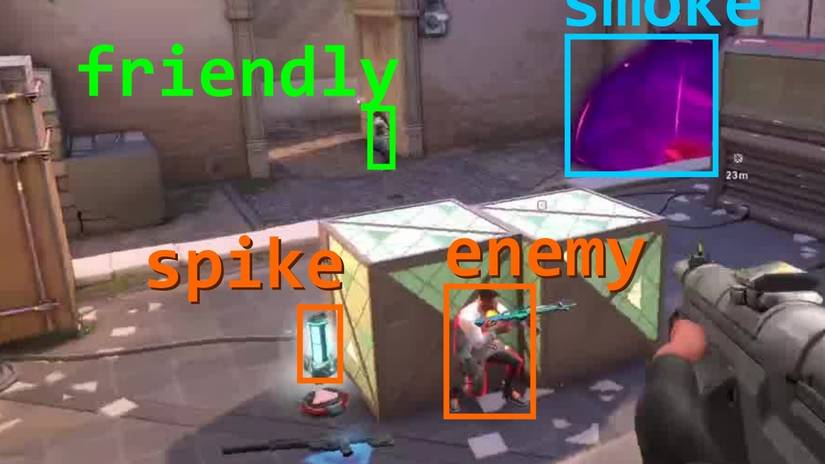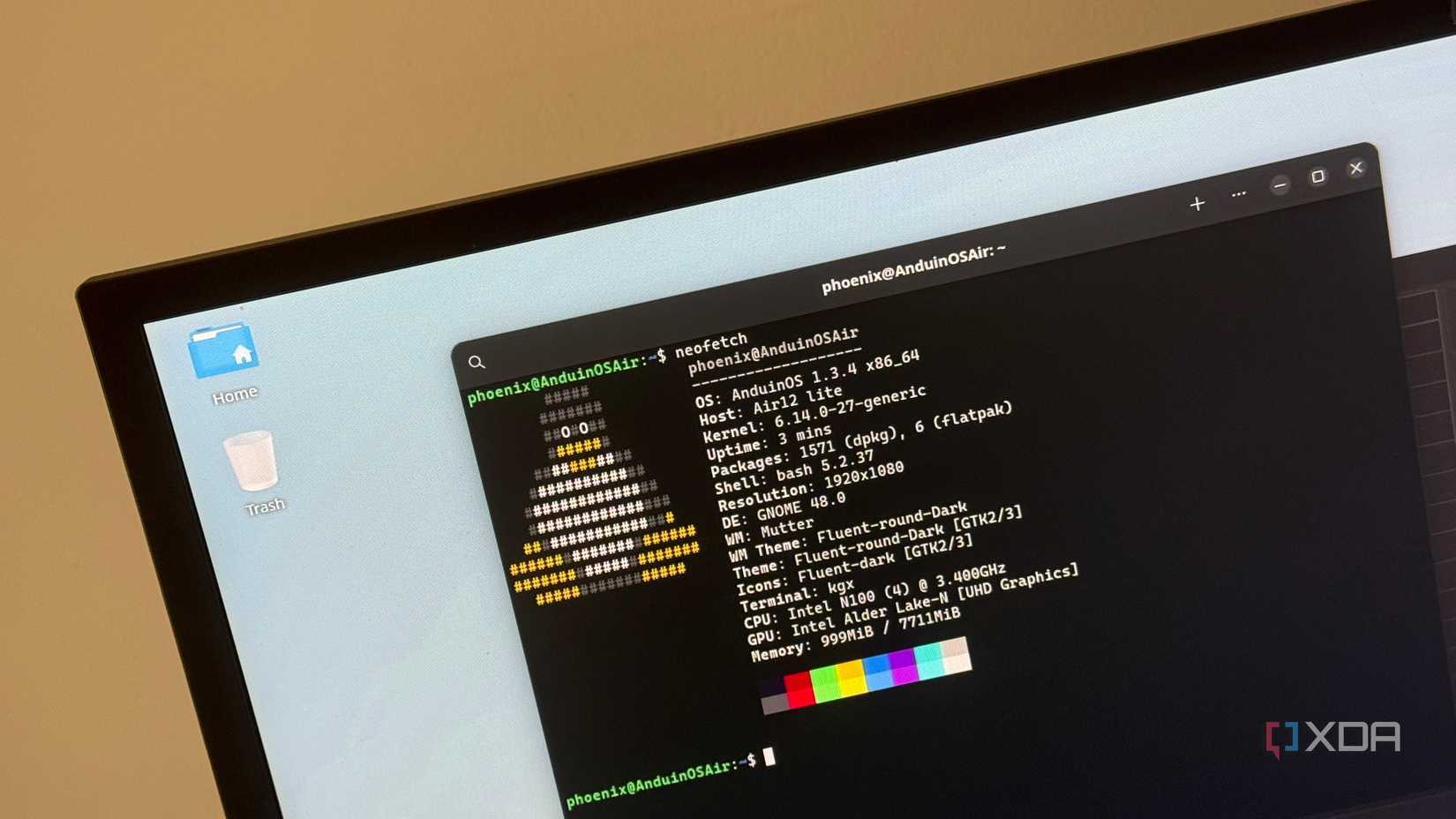- 19 Palestinian martyred in latest Israeli attacks on Gaza RADIO PAKISTAN
- Updates: Israel reducing Gaza City to ‘fields of rubble’ as attacks kill 78 Al Jazeera
- ‘Night of horror’: Gaza resident details confusion over staying or fleeing amid Israeli bombing Dawn
- Israel pounds Gaza City suburbs, Netanyahu to convene security cabinet Reuters
- Israel sends tanks deeper in Gaza City, more families flee Arab News
Blog
-
19 Palestinian martyred in latest Israeli attacks on Gaza – RADIO PAKISTAN
-

Nintendo rebrands transmedia division from Warpstar to Nintendo Stars
Nintendo has rebranded its transmedia division, changing the name from Warpstar Inc. to Nintendo Stars.
Warpstar is a consolidated subsidiary launched just last April to manage its film, TV, and other transmedia business. Now, however, in a memo posted to the official Nintendo Japan website, the company said it was “strengthening” the “ancillary use” of films featuring Nintendo IP and expanding it to also encompass live events and merchandise, “through project development, licensing, and other means.”
“By implementing and licensing various ancillary uses in films, Nintendo Stars Inc. aims to familiarize people around the world with Nintendo IP and provide new ways to experience it,” the statement added (thanks, GameDeveloper).
The press release also hinted that Nintendo Stars as it’s now known, will continue its development of the Kirby franchise, by “utilizing the know-how cultivated in this business,” and “expand[ing] the number of people who have access to Nintendo IP through cooperation with partners around the world, and strengthen the relationship between Nintendo and its customers.”
The statement also reminded investors that there’s a new animated film based on Super Mario Bros. scheduled to release on April 3, 2026, and a live-action film based The Legend of Zelda slated to debut on May 7, 2027.
Continue Reading
-

Apple’s suppliers face higher costs as it turns to automation
As Apple moves to diversify its manufacturing operations, it appears to be leaning on suppliers to shoulder the costs of automating their assembly lines. Here are the details.
The latest collateral effect of Trump’s trade war
In an exclusive report today, DigiTimes Asia says that Apple has been doubling down on industrial automation as it shifts away from China manufacturing.
The report says that while Apple has always incentivized its suppliers to invest in automation, the company “plans to intensify implementation starting in 2025.”
From the report:
“According to supply chain sources, Apple now mandates automation as a precondition for securing orders, requiring suppliers to independently invest in related equipment rather than relying on Apple to fund such upgrades.”
DigiTimes Asia says that this push touches on “all major product lines, including the iPhone, iPad, Apple Watch, and Mac,” and that while suppliers may see increased costs while spinning up their lines, this should be amortized in the long-term, with “yield rates and reduced production expenses.”
In practice, this means that while Apple looks to diversify its supply chain away from China due to Trump’s tariff wars, local workforces in other countries may not reap the benefits, as Apple’s reliance on automation reportedly “aim at receding labor dependency.”
Although Apple’s automation push doesn’t come as a surprise, it does undercut one of the U.S. government’s talking points when it comes to Apple and the pressure to drive it away from China.
Here’s a statement made last April by Commerce Secretary Howard Lutnick, as the tariff war was still heating up:
“The army of millions and millions of human beings screwing in little screws to make iPhones. That kind of thing is going to come to America.”
To be fair, Apple has done its best to appease the U.S. government with flashy announcements of recycled infrastructure plans. Still, today’s report makes it clear that, regardless of where production goes, automation, not labor, will probably drive Apple’s move away from China.
Accessory deals on Amazon
FTC: We use income earning auto affiliate links. More.
Continue Reading
-

What Dinosaur Teeth Reveal About Life 150 Million Years Ago
Photo of teeth in a jaw section of Giraffatitan from Tanzania (Museum für Naturkunde Berlin, MB.R.2180.20.5). The light-coloured area is the dentin, which has been exposed by tooth wear. Credit: Jan Kersten, Freie Universität Berlin, Fachrichtung Paläontologie Sauropod tooth wear reveals climate-driven diets and potential seasonal migration.
What did sauropods eat, and how far did they travel to meet their enormous food demands? An international team of researchers has reconstructed the feeding behavior of these long-necked dinosaurs by applying advanced dental wear analysis. Their study, published in Nature Ecology and Evolution, shows that microscopic wear patterns on tooth enamel can reveal unexpected details about migration, climate influences, and how different species shared ecological niches 150 million years ago.
Life during the Jurassic raises many questions: what did these giant herbivores consume, how did they coexist within the same environments, and did they perhaps move seasonally in search of food? These issues were examined by a team led by Dr. Daniela E. Winkler of Kiel University, Dr. Emanuel Tschopp of Freie Universität Berlin and the LIB, and André Saleiro of NOVA University Lisbon. Their approach relied on a novel source of evidence—microscopic traces on fossilized teeth that act as a record of feeding habits.
“I still find it fascinating that microscopic scratches on fossil teeth can tell us so much about diet and even behavior,” says Winkler, an expert in the applied methodology. The technique, known as Dental Microwear Texture Analysis (DMTA), was originally developed by a research group led by LIB scientist Professor Thomas Kaiser for studying mammals. The current study, published in Nature Ecology and Evolution, marks the first systematic application of the method to sauropods. The analyses were carried out in the laboratories of the LIB.
Tooth Enamel as an Environmental Archive
The researchers examined 322 high-resolution 3D scans of sauropod teeth from three well-known fossil sites: the Lourinhã Formation in Portugal, the Morrison Formation in the United States, and the Tendaguru Formation in Tanzania. In total, 39 individual dinosaurs were represented, with samples taken directly from original teeth or from detailed silicone molds.
“We’re talking about features on the micrometer scale,” Winkler explains. “These minuscule wear marks are created by contact between tooth and food, and they capture what the animal was eating in the last days or weeks of its life.”
Surprising Differences between Species and Regions
The statistical results revealed striking contrasts among sauropod groups and geographic regions. One notable case was the flagellicaudatans, the long-tailed sauropods that include Diplodocus. Their teeth displayed highly variable wear, suggesting a broad and flexible diet typical of generalist feeders.
In contrast, Camarasaurus specimens from both Portugal and the USA showed remarkably consistent wear patterns. This uniformity is unlikely to result solely from plant availability and instead suggests that these dinosaurs consistently sought out the same food sources year-round. “The climate in both Portugal and the USA was strongly seasonal, so some plants would not have been available at all times,” notes Tschopp. “The consistency in Camarasaurus tooth wear points to seasonal migration to secure the same resources.”
The titanosauriforms from Tanzania told a different story. Their teeth showed much heavier and more complex wear patterns. The researchers link this to the unique environmental setting of the Tendaguru Formation, which included tropical to semi-arid conditions and a nearby desert region. Winds likely carried quartz sand onto plants, meaning these sauropods regularly consumed vegetation coated with grit. This abrasive diet produced the distinctively worn teeth observed in the fossils.
Climate, Not Plant Variety, as the Key Factor
There were also clear differences between the regions themselves: teeth from Tanzania were consistently more heavily worn than those from Portugal or the USA. The crucial influencing factor? Climate.
“One of the most interesting aspects of this work is that we were able to relate differences in dental wear patterns to paleogeography and the habitat preferences of different sauropod faunas,” concludes André Saleiro. These findings also guide his future research: “The study showed me how to approach my ongoing work on niche partitioning in herbivorous dinosaurs – by focusing on specific paleo-environments to better understand the ecological relationships within species groups, and how these differences evolved across ecosystems.”
For Emanuel Tschopp, this is also one of the most exciting elements of the research: “With these microscopic traces, we can suddenly make behavioral statements about these enormous extinct animals. Migration, specialization, niche use – it all becomes tangible.” Another notable aspect: wear patterns differed depending on the area of the tooth – on the side (buccal) or on the chewing surface (occlusal). These differences were accounted for in the analysis to avoid distortion.
Relevance for Biodiversity Research
This study provides not only new insights into the lives of individual dinosaur species but also contributes to a broader understanding of palaeoecological relationships. Niche partitioning, climate-driven adaptations, and potential competition avoidance can thus be identified even in fossilized ecosystems.
“We demonstrate that ecological principles like niche formation and migration behavior were important not just today, but already 150 million years ago,” says Winkler. Tschopp adds: “The sauropods of the Morrison Formation show enormous species diversity – and that diversity was only possible because the species behaved differently and occupied different dietary niches.”
Looking Ahead: More Teeth, More Knowledge
The research is far from over. Future studies aim to explore whether juvenile and adult sauropods differed in their diets, or how dwarf species such as Europasaurus from Lower Saxony adapted to their specific island environment. Saleiro is already working on an expanded dataset for the Portuguese fauna, including other herbivorous dinosaurs.
“What excites me is that we can keep refining this method – and every new sample adds another piece to the puzzle,” says Winkler. “Our tools are getting better – and so is our understanding of what life back then was really like.” Tschopp agrees: “We’re still at the beginning with this method – but combining paleontology, modern technology and interdisciplinary collaboration opens up fascinating insights into ancient worlds.”
Reference: “Dental microwear texture analysis reveals behavioural, ecological and habitat signals in Late Jurassic sauropod dinosaur faunas” by Daniela E. Winkler, Emanuel Tschopp, André Saleiro, Ria Wiesinger and Thomas M. Kaiser, 18 July 2025, Nature Ecology & Evolution.
DOI: 10.1038/s41559-025-02794-5Never miss a breakthrough: Join the SciTechDaily newsletter.
Continue Reading
-

Osaka’s reset comes full circle with win over Gauff at the US Open
NEW YORK — This was a fourth-round match with unusually large consequences, a highly charged litmus test, a gut-check in real time.
After missing the entire 2023 season on maternity leave, four-time Grand Slam champion Naomi Osaka has expressed frustration with her lack of progress. When would her game regain that ethereal major-winning quality?
Coco Gauff, even in the wake of a title at Roland Garros, turned to biomechanics specialist Gavin MacMillan just before the US Open, willing to sacrifice short-term results by playing the long game. Could she rely on her great strengths of speed and competitive fire while making significant adjustments to her serve and forehand?
The answers arrived in only 64 minutes on Monday in Arthur Ashe Stadium as Osaka dropped a decisive 6-3, 6-1 decision on Gauff to advance to the quarterfinals. It’s Osaka’s first major quarterfinal since winning the 2021 Australian Open.
It was reminiscent of the memorable match between the two here six years ago. Osaka, at the height of her powers, dispatched a 15-year-old Gauff 6-3, 6-0 in a third-round match that ended with tears. The difference is that Gauff was seeded No. 3 here and Osaka was No. 23.
“I mean I’m a little sensitive — I don’t want to cry,” Osaka said afterward. “Honestly I had so much fun out here.
“This is my favorite court in the world, and it means so much to be back here.”
Much has been made of Osaka’s move to coach Tomasz Wiktorowski. And while Iga Swiatek’s former coach has been a boon to her confidence, the difference between the 2024 Osaka and this year’s edition might just be fitness — and the confidence that brings.
Even earlier this year, she appeared sluggish at times, impatient to end points quickly. Against Gauff, Osaka moved exceptionally well, weathered long rallies and stayed in a visibly positive frame of mind. Her intensity was palpable.
So was her patience. Osaka won 16 of the 24 rallies that went five shots or more. She also converted each of the four break points she earned. Osaka next plays Karolina Muchova, a three-set winner against Marta Kostyuk.
Gauff, meanwhile, consistently struggled with her forehand and service game. There were five double faults, but the forehand was the real issue. Gauff had 20 unforced errors on that side. On this occasion, even her usually reliable backhand sometimes broke down.
Even early on, Gauff’s forehand was fluky (five errors) and Osaka broke and then held at love for a 2-0 lead.
But while Gauff — with a tweaked toss — had eased into her service games in the opening rounds, she came out firing against Osaka. She stroked two aces in her second service game and the other two first serves were unreturned. They were all 110 mph-plus.
That break was the only margin until Gauff, trailing 5-3, was broken again. Two double faults, in addition to two groundstroke errors, gave Osaka the set in 31 minutes.
With the match on serve at 3-2 in the second set, Gauff served into trouble. A double fault started it and an errant backhand closed it as Osaka converted her third break point in her third try.
Osaka scored one last break to secure the match.
Osaka is realistically trying to win her third US Open title in eight years. This is her fifth trip to the quarterfinals of a Grand Slam. It’s worth noting that she won the first four.
The turning point, Osaka said, came last month in Montreal.
That was when Osaka came back from down a set and 5-3, saving two match points, to defeat No. 13 seed Liudmila Samsonova in a match that went more than two-and a-half hours.
“Since then, I’ve been thinking anything’s possible,” Osaka said in her on-court interview. “You just have to have a smile on your face.”
Continue Reading
-

David Byrne Reveals He’s Getting Married This Week, Shares Playlist
Wedding bells will be ringing soon for David Byrne. On Monday, the former Talking Heads frontman revealed that he’ll be tying the knot this week, just a few weeks after revealing that he is engaged to Mala Gaonkar, and also shared a playlist of instrumental songs that will play at his wedding dinner.
“I’m getting married this week and made an almost entirely instrumental playlist while our guests eat an amazing and spicy dinner,” Byrne wrote on Instagram, sharing a link to an Apple Music playlist. “My sense is that words and lyrics can be distracting – the ear goes to them, especially if it’s a song one knows.”
He added: “So, I opted for buoyant instrumentals that will create a hopeful and joyous atmosphere… and that folks can also ignore at the same time.”
The playlist includes 42 songs, and a focus on Latin music, including songs such as “Pa Japón” by El Alfa, “Perfidia” by Café Tacvba, “Chimborazo” and “Luz de Luna” by marimba-punk group Son Rompe Pera, “Canales” by Mexican Institute of Sound, and “En El Caribe Estoy Triste” by Meridian Brothers.
The playlist also features songs by Herbie Hancock, an instrumental version of Post Malone’s “Wow,” and Brian Eno’s “An Ending (Ascent).”
Byrne revealed that he was engaged to Baonkar in an interview with The Times, while discussing the song “Moisturizing Things” from his upcoming album. “My fiancée will sometimes come at me with greasy hands, ready to smear my face. And at one point I thought, ‘What if I wake up and really looked younger?’” the musician said in the interview. “But there’s a message, too. About how people judge us by the way we look. You learn a lesson you didn’t expect at the start.”
Byrne and Gaonkar collaborated in 2016 for a theater performance at the Stanford Arts Institute; they later reconnected for a different theatrical experience in 2022. The pair has also attended numerous events, including the 2023 Oscars and the premiere of Dune: Part Two, together.
The new playlist and the wedding plan revelation come just a few days before he’s set to release his album Who Is the Sky? alongside the Ghost Train Orchestra.
Byrne told Rolling Stone he called the album Who Is The Sky? because of a voice-to-text message that meant to ask “who is this guy?”
“The algorithm got it a little bit wrong,” he said. “And what came up on my phone was ‘Who is the sky?’ And I thought, ‘That’s a beautiful phrase.’ I know what they were really saying — it’s pretty easy to tell, in English anyway. But I thought, ‘I’m going to put that on the list of album titles.’”
Continue Reading
-
Here’s a Cheaper, Stress-Free Way to Upgrade to Windows 11 Pro – PCMag
- Here’s a Cheaper, Stress-Free Way to Upgrade to Windows 11 Pro PCMag
- Windows 10 isn’t cutting it anymore — upgrade your PC with Windows 11 Pro for less than $13 Mashable
- Windows 11 Home vs. Windows 11 Pro: Which Edition Do You Actually Need? CNET
- Microsoft is making everyone move to Windows 11, but it’s only $13 to get Windows 11 Pro Popular Science
- Why Entrepreneurs Shouldn’t Overlook This $13 Windows 11 Pro Deal Entrepreneur
Continue Reading
-

The Rise of Contemporary Art Puzzles
When Rami Metal walks through the scores of booths at the Armory Show, he looks not only for attention-grabbing paintings but also those that would make great puzzles.
“I try to find things that are more detailed and have more variance of color,” he said. “If you have 1,000 pieces and 200 of them are pieces of sky, it’s not fun. You’ll get through 80 percent of the puzzle and say, ‘Ugh, the sky.’”
Museum gift shops have sold puzzle sets of Impressionist and abstract masterworks for years, but there have been few options on the market featuring works by living artists who haven’t yet had their MoMA retrospective.
That’s starting to change. A handful of independent jigsaw companies, including Metal’s Kinstler Puzzles and Apostrophe Puzzles, have been licensing the work of painters virtually unknown outside the art world for their brainteasers.
Rami Metal started Kinstler Puzzles in August 2021 after realizing there were few contemporary art puzzles in the market. Apostrophe founder Mandi Masden was inspired to launch her Brooklyn-based puzzle company in 2019 after she came across a portrait by artist Charly Palmer that was outside her budget. Her friend gave her a custom puzzle of the artwork instead, prompting her to think about how puzzles could make contemporary art more accessible to the public.
“I was really into puzzles as a kid, and I knew a lot of us had memories of them from our childhoods, but the industry itself felt stuck in the past,” Masden said. “I wanted to make puzzles that focused on celebrating the talent, creativity, and perspective of artists of color, while catering to a segment of the market largely ignored by the industry.”
Metal, also a passionate puzzler, found himself fitting together tiny cardboard pieces of Pieter Bruegel’s “The Tower of Babel” (c. 1563) and Hieronymus Bosch’s “The Garden of Earthly Delights” (c. 1490–1510) for hours at a time well into adulthood. It was while he gallery-hopped in Chelsea and breezed through art fairs that he realized that the worlds of art puzzles and contemporary art rarely overlapped, and became inspired to combine them.
Pitching the idea of producing puzzles out of contemporary art to galleries and artists before he actually launched his business was harder. But Washington-based artist Andrea Joyce Heimer liked the concept, and licensed a rendition of her 2019 painting, “In The Summer We Started Drinking During The Hot Of The Day And By Night Time We Were Monsters.” He launched Kinstler in 2021 with two additional puzzles by artists Simone Johnson and Rusudan Khizanishvili.

Kinstler released a puzzle of artist Ken Gun Min’s “Stranger By The Lake (Bare Ass Creek)” (2023) this month. His work is an homage to a discreet nude bathing spot in Los Angeles that had been ravaged by fires. This month, Kinstler is releasing a new puzzle of Korean artist Ken Gun Min’s 2023 painting “Stranger by the Lake (Bare Ass Creek),” an homage to a nude sunbathing spot in Los Angeles that was destroyed in a 2009 fire. Min, too, has loved playing with puzzles since he was a child. He was fascinated by the fact that individual fragments didn’t make visual sense until he fitted them together. Now he sees comparisons between the visual riddles and his current practice.
“There’s a mix of abstraction and spontaneity — gestural brushstrokes, layers of pigment meeting embroidery — but when you step back, they come together to form a story,” Min said.
For Masden, a good puzzle starts with a compelling image that tells a story and has a strong point of view. She also loves discovering nuances of brushwork and the layers of depth in a mixed media piece.
“There’s something really poetic about the image that emerges from 1,000 tiny pieces of someone’s curiosity and exploration, and I love being surprised by where that journey takes me,” she said.

Umar Rashid’s “The Battle of Malibu” (2020) visualizes a fictional war between the tribes of Southern California and a Franco-English imperial force Both Kinstler and Apostrophe have recruited a diverse stable of artists who earn a commission for every purchase, and their games are available for purchase in museums and bookstores across the country. The latter also donates a portion of each sale to a nonprofit organization working to expand arts education for communities of color.
Lately, Metal has been drawn to work with subtle shifting color gradients and lots of visual activity. Umar Rashid’s “Battle of Malibu” (2020) portrays a fictitious uprising of Los Angeles-area Indigenous tribes against a European imperial force.
“You’ll spend four to eight hours or more with the work, and you’ll get to know that artist pretty well,” Metal said. “You can frame the puzzle, too. It’s literally an artwork.”
Continue Reading
-

Windows 11’s driver signature requirement is one of the best anti-consumer security features out there
Windows 11, the most-used consumer desktop operating system in the world, undoubtedly has its problems. Yet, despite those problems, it’s the most refined version of the company’s operating system, regardless of the unsavory additions that have seen many users either commit to Windows 10 for as long as possible or even make the jump to Linux instead. There’s one specific aspect of Windows that has always bugged me, though, and it’s Microsoft’s long-standing policy of requiring drivers to be digitally signed before the operating system will load them.
In simple terms, a driver is low-level code (often running in the operating system’s kernel) that lets hardware or software interact with Windows. A signed driver includes a cryptographic signature from a trusted authority (such as Microsoft’s own certificate or, in the past, a Microsoft-authorized Certificate Authority), which Windows verifies for authenticity and integrity before allowing it to run. This driver signature enforcement has evolved over the decades, becoming a mandatory gatekeeper in the process, and it has a dual nature.
On one hand, it can’t be denied that it drastically improves security by blocking malware from running at such a deep level (without a proper certificate anyway, which can be stolen), but on the other hand, it limits user control and demands compliance with Microsoft’s rules. It’s hostile to user freedom, yet has clear benefits, too. It’s one of the best security features of Windows, yet its existence is inherently anti-consumer.
What are driver signatures?
They have a long history
Driver signing is part of Microsoft’s Code Integrity security feature, first introduced in the Windows Vista era and made mandatory with Windows 10, version 1607. The concept is straightforward: any code that runs in the Windows kernel (Known as “Ring 0”) must carry a valid digital signature from a trusted authority. According to Microsoft’s official documentation, Code Integrity “improves the security of the operating system by validating the integrity of a driver or system file each time it’s loaded into memory,” and on 64-bit versions of Windows, “kernel-mode drivers must be digitally signed.” In practice, this means Windows will refuse to load any driver that isn’t signed by a recognized certificate.
Like on other operating systems, the kernel (ntoskernel.exe, or the Windows NT kernel) is the core of the OS with the highest privileges, so blocking unauthorized code from running in this region is critical. Digital signatures ensure that a driver was published by an identified developer and hasn’t been tampered with since. Unsigned or maliciously modified drivers simply won’t install under the default policy, either, and from a security perspective, this is a good thing that protects consumers and companies alike.
In practice, this means that legitimate hardware vendors and developers go through a signing process for their driver, and in modern Windows, this often involves getting an Extended Validation Certificate and submitting the driver to Microsoft for approval. If code tries to execute in the kernel without this approval, you’ll see an error along the lines of “Windows cannot verify the digital signature for the drivers required for this device.” This prevents a whole class of attacks where malware might install a rootkit or malicious driver to gain total control of the system. On modern 64-bit Windows, loading a device driver is essentially the only supported way to execute arbitrary code in the kernel, and this is completely disabled for unsigned executables.
What about an Administrator? Well, not even accounts with that level of privilege are exempt. No matter who you are, you can’t load an unsigned driver on 64-bit Windows. The only way to disable it is to use the “Disable driver signature enforcement” boot option, which will reset on your next boot, or use bcdedit to disable the checks entirely. It’s a safety net placed by Microsoft that not even the owner of the computer should ever cross.
Microsoft has tightened the requirements over the years
It all started with a simple driver verifier
Microsoft’s path toward mandatory driver signatures began in the mid-2000s amid growing concern over spyware, rootkits, and OS stability. Starting with Windows 2000, Driver Verifier was a command-line program that could be used to test drivers for illegal functions and detect bugs, before it was updated with a GUI coinciding with the launch of Windows XP. Back then, driver signing was present but not strictly required, though a group policy option could be set to disallow installation entirely, warn the user but still allow installation, or just install silently.
This changed with the x64 editions of Windows. Starting with Windows Vista (and even Windows XP x64 Edition in a limited form, though you could self-sign a certificate), 64-bit Windows systems required kernel-mode drivers to be signed, as part of a broader security initiative that also included Kernel Patch Protection, informally referred to as PatchGuard. The introduction of mandatory signing in Vista x64 was controversial at the time, but Microsoft’s stated aim was to eliminate entire categories of malware and, according to some reports at the time, protect DRM.
It’s no secret that driver signature enforcement aligns with many industry interests, and it also meant that at the time that Microsoft could essentially force companies to pay for a license to distribute their drivers. Otherwise, those drivers simply wouldn’t install on most machines. Since then, the requirements have only become more stringent, and as already mentioned, Windows 10 version 1607 enforced the requirement that all drivers must be attestation-signed by Microsoft.
Windows 11, which requires UEFI Secure Boot and a TPM by default on new systems, doubles down on ensuring the boot process and drivers are trusted. In essence, modern Windows has a central authority (Microsoft) that says which low-level code is allowed to run. The result is a much harder target for attackers to penetrate, while conveniently placing Microsoft (and a handful of certificate vendors) as gatekeepers of the Windows platform.
Microsoft wants to protect the kernel at all costs
Even if it means regular developers can’t use it, either
To be clear, there’s a strong case to be made that driver signature enforcement has significantly improved security on Windows. By blocking unsigned drivers, all kinds of digital attacks, such as rootkits and kernel-level malware, that could otherwise hide from antivirus software are severely hampered. In the past, many of the most advanced malware would try to operate as a driver in order to access memory or alter the system at a deep level. Today, if a piece of malware doesn’t have a stolen or leaked digital certificate, it simply cannot load a driver on a fully-patched 64-bit Windows system, which is a pretty big barrier to cross when compared to the Windows XP days. If an unsigned driver is found at boot, the system simply won’t start.
Modern anti-cheat systems for online games have also become major beneficiaries of Windows’ driver signing requirements. In many competitive titles, many of the more advanced cheat developers will try to run their cheat programs in kernel mode to avoid detection by user-mode anti-cheat tools. This is why Easy-Anti Cheat, Faceit, Riot Vanguard, and many more anti-cheat solutions all install their own kernel drivers as part of the anti-cheat suite. These anti-cheats operate with a level of privilege above even an Administrator user (remember how not even an Administrator can install an unsigned driver?) to monitor the system for any cheats, block memory access to the game, and ensure the game’s code isn’t being tampered with. Driver signing is a core part of this protective moat that developers build around their games. Because Windows will reject any driver that isn’t properly signed, cheat developers can’t simply build a custom kernel driver and load it on a whim to bypass anti-cheat, as the OS won’t even allow it.
In response, cheat providers and malware developers have looked for loopholes that prove the effectiveness of driver enforcement. One common technique is known as BYOVD, or Bring Your Own Vulnerable Driver. where attackers find an already signed driver that has known security holes. The legitimate driver is loaded, accepted by Windows, and then its vulnerabilities are exploited in order to execute code in the kernel. One such example abuses the Lenovo Mapper driver, deploying an unsigned cheat driver and disabling the TPM check conducted by Riot’s Vanguard.
All of this relates back to Direct Memory Access (DMA) attacks and cheats, too. DMA allows hardware devices to access system memory directly, bypassing the CPU and potentially allowing a secondary computer to read from or write to the game’s memory. However, Windows has Kernel DMA Protection that makes use of IOMMU to block unauthorized PCIe devices from accessing memory. Only devices with DMA Remapping-compatible drivers are able to, and again, this driver feature is protected as a part of Microsoft’s signature enforcement. Combining this with Secure Boot, which prevents boot-time malware or cheat loaders from inserting themselves before Windows starts, and TPM-based boot attestation, and what you’ve got is a considerably secure environment, considering it’s a user-controlled PC.
This technique isn’t unique to game cheats, either. There are many ransomware examples that have abused drivers to disable system security features and load malicious code into the kernel, essentially shifting the attack surface from the operating system to the low-level code that Microsoft has vetted and signed. Malware developers need to piggyback off of an existing driver already installed on the user’s computer, which means either finding a vulnerability in an extremely common driver or tricking the user into installing a piece of software with the vulnerability.
Driver signature enforcement is merely a cog in an overall security architecture, and alone, it’s not enough to stop everything. Yet, paired with these other technologies Microsoft also uses, there’s no denying that it raises the bar considerably. A stolen certificate will be running on borrowed time before it’s discovered and revoked, and hardware workarounds are often fleeting, too.
Why is driver signature enforcement anti-consumer?
It comes down to what you can and can’t run on your own hardware
If driver signing is so good for security, what makes it anti-consumer? The criticism comes from the fact that this security mechanism inherently restricts user freedom and control over their own system. There’s an implicit trade-off between security and openness, and Microsoft leans heavily on the former rather than the latter. The company chose a model where the operating system only trusts low-level code vetted by Microsoft, essentially centralizing authority in a way that also aligns with industry interests and makes them money on certification, too.
Going back to disabling driver signature verification, developing your own custom driver for personal use, be it for your own hardware or for a piece of hardware you own, is a nuisance. You’ll need to either boot with the “Disable Driver Signature Enforcement” start-up option, disabling integrity checks entirely, or enable the Windows test-signing mode, neither of which is particularly convenient to use. You don’t own your computer in the same way “ownership” would typically imply; at the kernel level, Microsoft retains control.
As well, only big companies or well-resourced developers can easily meet the driver signing requirements. To get a driver properly signed for a modern Windows version, a developer must obtain an EV Code Signing Certificate, requiring rigorous identity verification and a hardware token, while paying several hundred dollars per year for it, too. Notepad++ is a famous example of this code-signing debacle, which sees a user-level program affected by the refusal to pay Microsoft a yearly fee for certification. The same concept applies to drivers, too.
However, the requirement can also prevent regular consumers from using old hardware that never received a signed driver update. Let’s say you have an old PC peripheral you want to plug into a Windows 11 computer; if its driver is from the Windows XP era and never had a digital signature, it’ll be blocked outright. You can disable signature enforcement (with all of the issues that brings) or abandon the hardware. While you could have modified the driver in the past, DIY solutions are largely unheard of these days, given the associated cost and the complexity of it.
In fact, even when community members take matters into their own hands, things can backfire quickly. There are two known drivers developers can use to control system fans in their own applications: InpOut32 and WinRing0. The former conflicts with Riot’s Vanguard, so many opted for the latter, and it was the backbone of tools like Fan Control. However, it was discovered in 2020 that WinRing0 had a massive vulnerability that saw it be flagged and blocked by Windows Defender a few years later, resulting in applications relying on it being dead in the water.
This problem is compounded by the cost problem when it comes to developing and maintaining a valid driver that Microsoft will accept. Here’s a passage from an article on The Verge which spells out the problem:
SignalRGB founder Timothy Sun says the security risk is more complicated, though. “Since WinRing0 installs system-wide, we realized we were dependent on whatever version was first installed on a user’s system. This made it extremely difficult to verify whether other applications had installed potentially vulnerable versions, effectively putting our users at risk despite our best efforts,” he says.
That’s why his company invested in its own RGB interface instead, eventually ditching WinRing0 in 2023 in favor of a proprietary SMBus driver. But the developers I spoke to, including Sun, agree that’s an expensive proposition.
“I won’t sugarcoat it — the development process was challenging and required significant engineering resources,” says Sun. “Small open source projects do not have the financial ability to go that route, nor dedicated Microsoft kernel development experience to do so,” says OpenRGB’s [Adam] Honse.
WingRing0’s developer, OpenLibSys, appears inactive these days, and it’s unlikely that the same driver, if updated, would be approved by Microsoft for signing under the company’s stricter guidelines. Microsoft also knew how many applications relied on it (Razer Synapse, SteelSeries Engine, and more all used it, too), giving it a few more years of life before axing it in 2025.
What about Linux?
A very different ethos
Unlike Windows, Linux is an open system: there is no single authority that dictates what can run in the kernel. Linux distributions do have the ability to enforce module signing (particularly if Secure Boot is enabled, some distros require kernel modules to be signed by a key), but ultimately, the user can recompile the kernel or disable those checks. This is one of the many reasons anti-cheat software can’t be deployed on Linux in the same way that it can be on Windows.
On Linux, a cheater with root-level access is all-powerful. They could recompile the kernel to remove anti-cheat hooks, or load their own kernel module with no central signing authority to stop them, and given that many cheaters simply ran the cheats as root in the /root directory as a sufficient method to avoid detection, you can see why game developers aren’t too keen on porting their anti-cheat software to Linux. Even if a game insisted on root access (which would arguably be worse than just the anti-cheat equivalent on Windows), you could run it in a “fakeroot” environment so that the game thinks it has root access when it doesn’t.
All of this is to say that the open nature of Linux means any defensive measure can be counteracted by an equally privileged offense, and this reality is reflected in the current state of Linux gaming. While many popular titles are playable on Linux (oftentimes running even better than they would on Windows), many competitive games outright refuse to run on Linux as a result. These same concepts apply to malware, too, though the landscape on Linux when it comes to malicious software is very different.
Microsoft’s driver signature enforcement is attractive to companies. By locking down the kernel, Windows enables a level of security and control (for fighting cheats, malware, and more) that simply cannot be achieved on a more open system without those restrictions. For many gamers and companies, that trade-off is often worth it, even if it frustrates a segment of users. Linux users enjoy unparalleled control, but that very freedom means any client-side anti-cheat mechanism is usually futile. To even get the security benefits Windows has in this area on a Linux machine, you’d be recreating the same constraints that made you want to leave Windows in the first place.
As for the reason Linux users are still secure, despite not having a central certificate authority? The answer is found across a myriad of reasons. Between the advanced user permissions system of Linux, an open-source community rapidly patching vulnerabilities as they appear (even when some major ones slip through, like xz-utils), its reduced market share making it less of an interesting target, and software packages largely being installed through vetted repositories, it’s nowhere near as attractive as targeting a Windows user instead.
Freedom is not always compatible with security
Linux and Windows differ greatly
Microsoft’s driver signature policy is undeniably effective for security: by requiring all kernel drivers to be signed and vetted, Microsoft has built one of the most robust consumer OS defenses against low-level malware and cheating tools. Windows, as a platform, is uniquely capable of maintaining a trusted operating system that users and software can trust. That’s why it’s one of the “best” security features, because it works really well and has made a big difference in protecting systems.
Yet that security comes at a cost to consumers. It takes away control and hands it to a central authority, and not being able to fully control what your operating system does doesn’t sit right with many who value open computing. In a sense, Windows 11 treats the user a bit like an untrusted participant when it comes to kernel code, assuming anyone (including you) could do something harmful if not prevented.
From a security standpoint, this particular feature is a great example of risk reduction. It significantly closes one of the most dangerous avenues of attack, but from a consumer rights standpoint, it can feel like we’re simply renting the functionality to use our own hardware, as we’re at the behest of what Microsoft does and does not allow. What if this concept is expanded to “protect” the operating system? What if debloating tools and scripts make modifications that Microsoft isn’t happy about, as they modify the system?
For the average user, enforcing driver signatures is a great move. Undeniably. Yet it doesn’t feel great that open-source developers are ousted from the platform thanks to the costs associated with developing their own software and sharing it with others, nor does it feel great to feel as if I don’t truly own my hardware, so long as Windows is the primary way that I interface with it.
Continue Reading
-

Study Reveals Cause of Potentially Damaging Electrical Discharges on Satellites
Using data collected by sensors on the U.S. Department of Defense Space Test Program Satellite 6 (STP-Sat6) in geostationary orbit, scientists have found that the number of electrical discharges on a spacecraft directly correlates to the number of electrons in the surrounding environment — information that could help them better understand how to protect equipment in space.
STP-Sat6. Image credit: Northrop Grumman.
Spacecraft environment discharges (SEDs) are transient electrical breakdowns that can damage sensitive onboard electronics and communication systems.
Researchers have long known that SEDs exist, but they haven’t understood the relationship between the electrons in the space environment and SEDs.
“To do that, we needed two sensors on a single spacecraft: one that looked at the number and activity of electrons, and another that looked at the radio frequency signal,” said Dr. Amitabh Nag, a researcher at Los Alamos National Laboratory.
These SEDs are typically the result of a difference in surface charging caused by electrons accumulating on spacecraft surfaces in orbit.
Not unlike static electricity on Earth — when energy builds up as a person walks across a carpet, for example, and causes a spark when a finger touches a door handle — electrical discharges in the space environment occur when a buildup of energy on the spacecraft eventually reaches a large enough voltage that the energy is released.
STP-Sat6 has both of those sensors on board, giving the researchers a unique opportunity to simultaneously look at both radio frequency and electron activity data.
“We were able to see the rate of SEDs reported by the radio frequency sensor and compare it to the activity of electron particles within a certain voltage range,” Dr. Nag said.
“What we learned was that the peaks in SEDs correlated to peaks in electron activity.”
The authors looked at more than a year’s worth of data from the two sensors, identifying more than 270 high-rate SED periods and several hundred episodes of high electron activity.
In about three-fourths of the cases, peaks in electron activity preceded the SED events by 24 to 45 minutes.
This delay suggests that the buildup of charge from low-energy electrons plays a key role in priming the spacecraft for electrostatic discharges.
“We observed that as electron activity increases, especially in that 7.9 to 12.2 keV range, the spacecraft starts to accumulate charge,” Dr. Nag said.
“This continues until a tipping point is reached and SEDs occur.”
“That lead time opens the door for potential forecasting tools to mitigate risks.”
“Future missions could integrate real-time monitoring of low-energy electrons to predict and respond to charging events before they impact operations.”
The results appear in the journal Advances in Space Research.
_____
Amitabh Nag et al. 2025. Radio frequency transients correlated with electron flux measured on-board the STP-Sat6. Advances in Space Research 76 (6): 3692-3699; doi: 10.1016/j.asr.2025.07.026
Continue Reading







